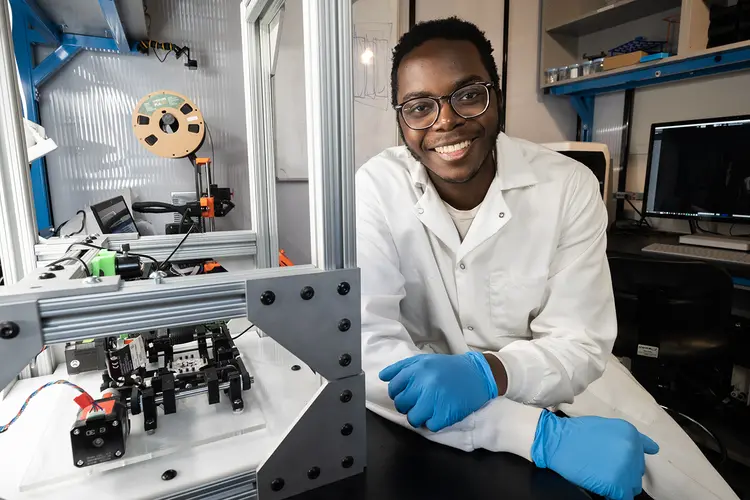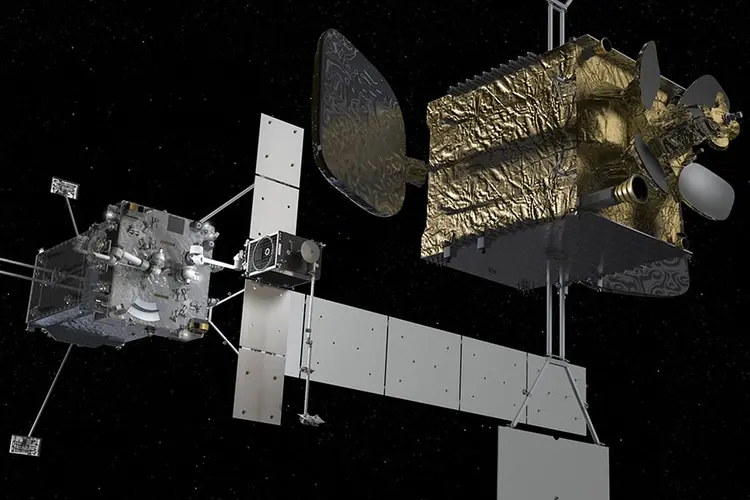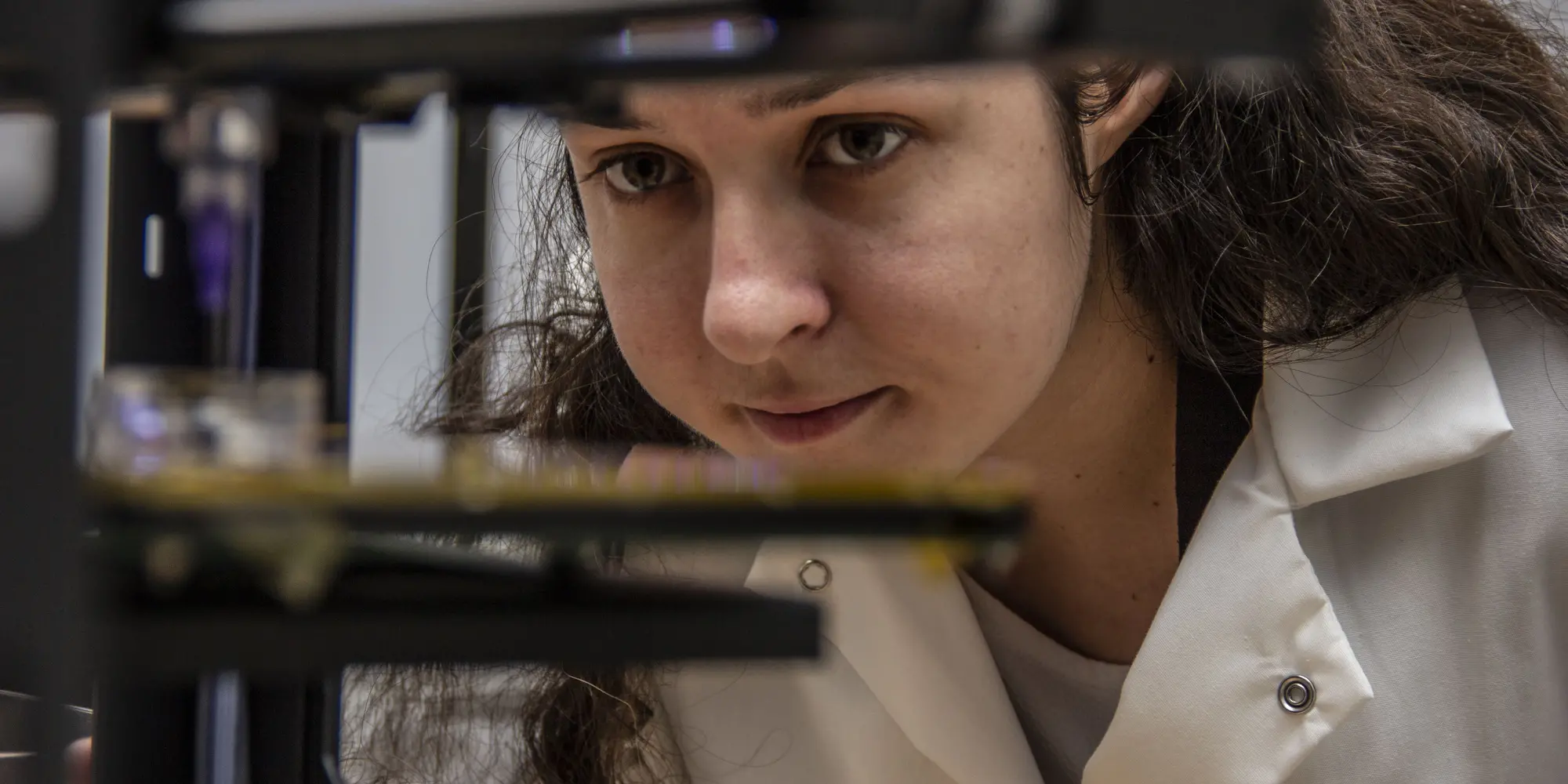
Multi-university Team Building Actuators for Next Generation Sustainable Bio-bots
Media Inquiries
Animals have long served as inspiration for robotics. However, many of the mechanical properties, physical capabilities and the behavioral flexibility seen in animals have yet to be achieved in robotic platforms. Enter biohybrid robotics — artificially engineered structures combined with living bio-systems.
Victoria Webster-Wood(opens in new window), an assistant professor of mechanical engineering(opens in new window), will lead a team of researchers across Carnegie Mellon University, Northwestern University and The Georgia Institute of Technology to improve the strength, lifespan and control of biohybrid actuators. The team received a $6.25 million Multidisciplinary University Research Initiative (MURI) grant from the Department of Defense (DOD).
“The MURI allows us to bring together a diverse transdisciplinary team spanning materials, biomedical engineering, mechanical engineering, computer science and electrical engineering to tackle challenging problems in biohybrid systems,” said Jonathan Rivnay, a professor of biomedical engineering at Northwestern University.
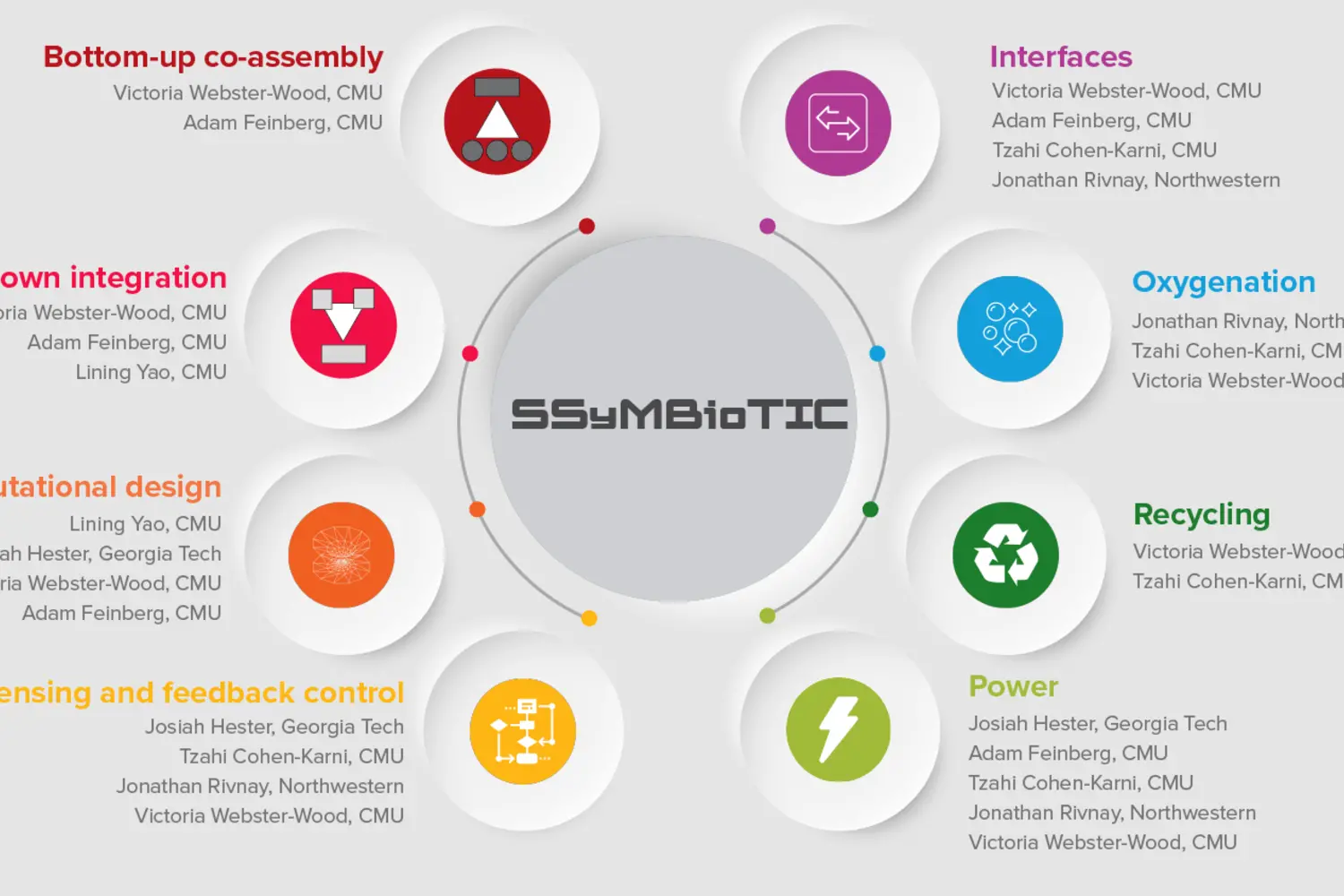
Multi-university team comes together to create actuators for sustainable bio-bots.
Over the course of five years, the project aims to identify how to combine living materials, protein-based materials and engineered materials to build larger scale, self-sustaining bio-actuators; understand how to keep these materials alive in a real-world environment, and determine how to leverage computational design strategies to improve peak performance.
“Right now our biohybrid robots run around in petri dishes and in sterile incubators,” explained Webster-Wood. “Through this project we hope to leverage our understanding of living muscle to create stronger, more useful muscle-based actuators.”
"Through this project we hope to leverage our understanding of living muscle to create stronger, more useful muscle-based actuators." — Victoria Webster-Wood
Biohybrid actuators will make it possible for future robots to grow, develop and heal as they operate in the real world. The nature of the material will make them biodegradable and sustainable.
“This research lays the foundation to move these actuators to translation,” said Webster-Wood. “We hope to get living muscle-based actuators to the point where they are reliable and predictable enough that someone can select one, just like they would a motor, and put them to use in a robot.”
With support from researchers across labs at the DOD and the Department of Energy, the team intends to keep the idea “how do we move toward translation” at the center of the project to make sure that their work is constantly progressing toward real-world use.
“Building sustainable, long-lived, and bio-inspired robotics is one of the grand engineering challenges of the next many decades. This award is a significant step forward to build systems that seem almost impossible,” emphasized Josiah Hester, an associate professor of interactive computing and computer science at the Georgia Institute of Technology. “This project will build a foundation of scientific knowledge and valuable tools and systems for these future bio-bots. I can't wait to get started.”
Additional researchers on this project include Carnegie Mellon University faculty members Adam Feinberg(opens in new window), Tzahi Cohen-Karni(opens in new window), and Lining Yao(opens in new window).
